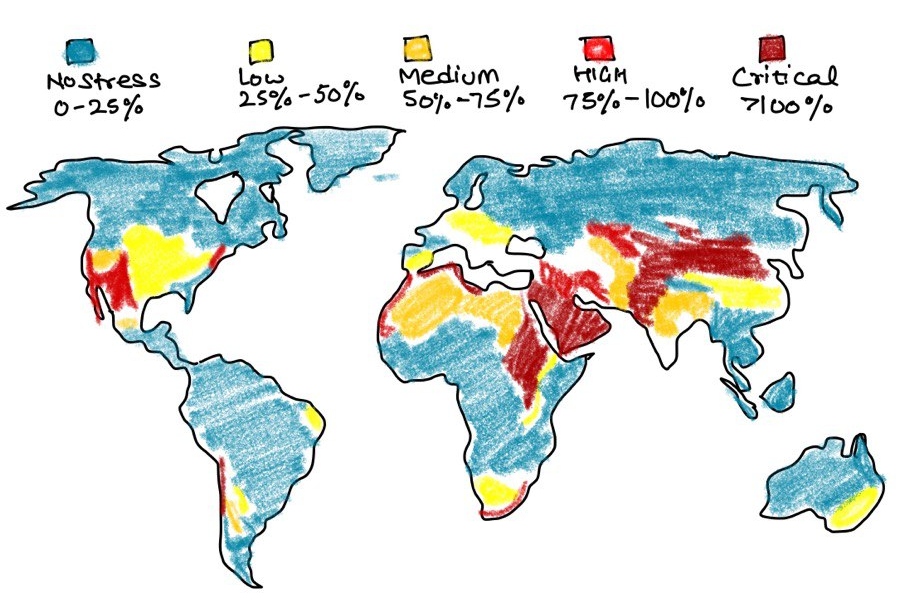Why is the world today confronted with a crisis of availability of and access to freshwater resources?
Why is the world today confronted with a crisis of availability of and access to freshwater resources?
Freshwater constitutes only 2.5% of the total water on Earth, and less than 1% is easily accessible. Yet, demand for water has tripled in the last 50 years due to population growth, urbanisation, and industrialisation, leading to a freshwater crisis both in terms of availability and access.
Causes of the Freshwater Crisis
-
Unequal Geographical Distribution
- ~60% of global freshwater lies in just 10 countries (e.g., Brazil, Canada, Russia).
- Water-stressed regions like the Middle East, North Africa, and western India face chronic shortages.
-
Over-extraction of Groundwater
- India is the largest extractor of groundwater—more than China and the US combined (World Bank).
- Punjab’s water table is falling by >1 metre annually.
-
Climate Change and Glacial Melt
- Glaciers feeding rivers like Ganga, Yangtze, and Mekong are melting rapidly.
- Erratic rainfall patterns cause prolonged droughts (e.g., Horn of Africa) and flash floods (e.g., Pakistan, 2022).
-
Pollution of Water Bodies
- Industrial waste, sewage, and agricultural runoff pollute rivers and lakes.
- Yamuna and Citarum (Indonesia) are among the world’s most polluted rivers.
-
Rapid Urbanisation and Infrastructure Deficits
- Cities like Jakarta and Bangalore struggle with inadequate water supply and waste treatment.
- Leakages and theft lead to 30–40% water loss in urban water systems.
-
Population Growth and Rising Demand
- Global population is expected to reach 9.7 billion by 2050.
- Water demand may rise by 50% by 2030 (UN Water Report).
-
Unsustainable Agriculture Practices
- Agriculture consumes ~70% of global freshwater.
- Flood irrigation and water-intensive crops (e.g., rice, sugarcane) deplete aquifers—seen in Maharashtra and Punjab.
-
Transboundary Water Disputes
- Rivers like Nile, Tigris-Euphrates, and Indus are shared by multiple countries.
- Disputes over water allocation (e.g., India–Pakistan Indus Water Treaty) hamper equitable access.
-
Weak Governance and Regulatory Gaps
- Many countries lack Integrated Water Resource Management (IWRM).
- Poor implementation of policies like Water (Prevention & Control of Pollution) Act, 1974 in India.
The freshwater crisis reflects a complex interplay of natural and anthropogenic factors. A sustainable way forward involves efficient water management, pollution control, equitable sharing, and climate-resilient infrastructure.
Answer Length
Model answers may exceed the word limit for better clarity and depth. Use them as a guide, but always frame your final answer within the exam’s prescribed limit.
In just 60 sec
Evaluate your handwritten answer
- Get detailed feedback
- Model Answer after evaluation
Model Answers by Subject
Crack UPSC with your
Personal AI Mentor
An AI-powered ecosystem to learn, practice, and evaluate with discipline

